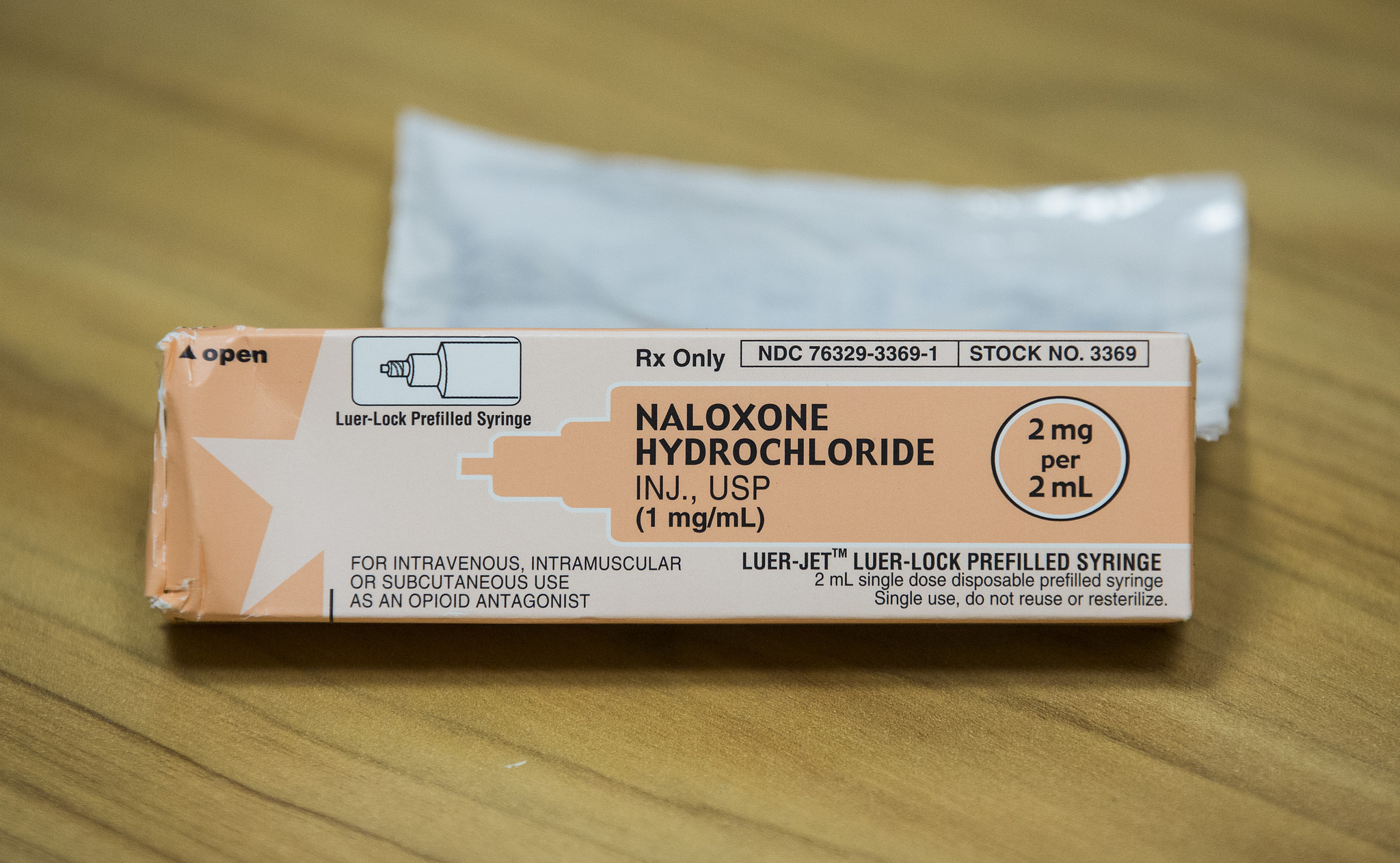 Naloxone is a medication that blocks the effects of opioids such as heroin and similar prescription drugs. Image available for reuseMark Linn - Copy Editor
Naloxone is a medication that blocks the effects of opioids such as heroin and similar prescription drugs. Image available for reuseMark Linn - Copy Editorcopy@insideuab.com
A crowdfunded study that began in 2015 to provide life-saving opioid overdose reversal medication to members of the community has already saved nine lives.
In May 2015, a UAB researcher and her team began a crowdfunding project to purchase kits of the drug naloxone, also known under the brand name of Narcan, a medication that blocks the effects of opioids such as heroin and prescription medication used to relieve pain. The study is headed by Karen Cropsey, Psy. D., an associate professor in the Department of Psychiatry who focuses on treating substance abuse in vulnerable populations.
The original goal of the study was to raise $7,500 to purchase 170 Narcan kits and then distribute and train individuals in their use. The goal was exceeded with a total of $11,500 raised, allowing Cropsey and her team to purchase around 348 kits.
The purpose of the study, aside from providing potentially life-saving medication to those at risk of experiencing or witnessing an opioid overdose, is to follow the individuals who were given the Narcan kits for six months to see if the medication was used, who it was used on, whether the overdose victim went to the emergency room and if they entered substance abuse treatment later.
“The benefit is that normal individuals can be trained to recognize signs of opioid overdose and they can intervene faster and hopefully that can allow the person to live long enough to get to the hospital to get the proper medical treatment,” Cropsey said.
Of the nine people that received Narcan to reverse an overdose, most of them were not participants in the initial study, but a third party that one of the participants witnessed overdosing.
Cropsey stressed that Narcan is not the only response needed to treat an overdose. Since the effects of the opioid-blocking medication only persist for an hour or so, the effects of an overdose may persist after the naloxone has worn off.
“It’s really not in place of medical care or going to the hospital,” Cropsey said. “It’s really just a way to intervene sooner and to hopefully prevent a fatal overdose so that the person has time to get to the hospital.”
“It’s a harm reduction strategy,” Cropsey said. “It’s not really treatment, we’re hoping that people will live to seek out treatment.”
To address concerns that access to Narcan kits might encourage opioid users to act more recklessly in their drug use or discourage them from seeking substance abuse treatment, Cropsey said that the effects are not a permanent, or even pleasant experience.
“The thing about naloxone is it’s pretty aversive,” Cropsey said. “That’s why people continue to use opioid, is that the withdrawal symptoms are pretty nasty, people liken it to sort of having the worst case of flu in your life.”
The effects of naloxone force patients to experience the effects of withdrawal immediately, which can cause severe nausea, vomiting and chills.
“I don’t think anyone would seek to get into that kind of withdrawal situation,” Cropsey said.
Cropsey and her team are now hoping to continue the study and get more funding to purchase additional Narcan kits.
“We’re really hoping to be able to raise additional funds to be able to continue the project and expand it even further,” Cropsey said. “We’re collecting data on how many kits are being used, and who they’re being used on and are people able to follow our instructions.”
The researchers hope that their findings will help inform policy decisions by lawmakers to address the rising death tolls from opioid overdoses. There were 28,647 deaths from opioid overdoses across the U.S. in 2014, according to the Centers for Disease Control, a number that has quadrupled since 2000.
In Alabama, 723 people died from overdoses in 2014, a 19.7 percent increase from the previous year.
“I would like to see naloxone be distributed when a doctor prescribes any opioid for any pain condition,” Cropsey said, pointing out the risk of accidental overdoses when mixing opioids with alcohol or benzodiazepines like Xanax, which are used to treat anxiety.
“I don’t know how many people are aware of those kinds of interactions,” Cropsey said. “So I would like to see naloxone to be much more readily available to people at risk.”


